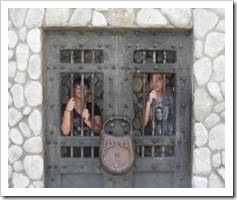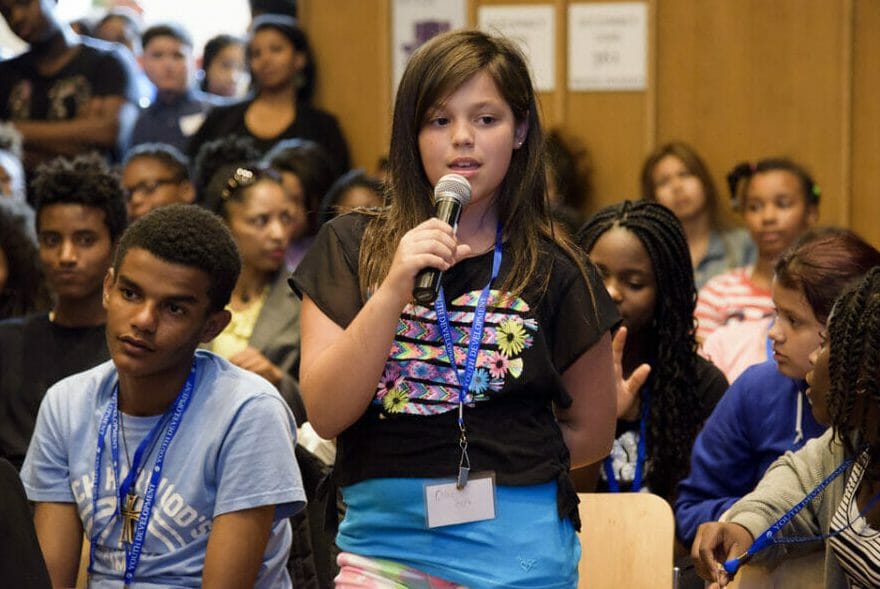 Two months ago, I took a group of kids to a leadership camp for two days. During these two days, we wanted to teach kids to recognize their abilities and take the role of leadership with responsibility.
Two months ago, I took a group of kids to a leadership camp for two days. During these two days, we wanted to teach kids to recognize their abilities and take the role of leadership with responsibility.
The kids were awesome, chosen student leaders in Grade 7, which is the last year of primary school here in Queensland, Australia. They came from 5 schools and had been school captains for more than 7 months. As part of their role, they needed to set an example to other kids and help solve relationship problems among the students at their school. They were chosen because they were smart kids, sensitive and with a high sense of justice. According to their principal and teachers, most of them had passed many tests to become leaders, but they were not ready for the test I had for them – The Power Test.
Before I tell you what happened at the camp, I want to tell you about a famous experiment in psychology, the Prison Experiment, which was the inspiration for my character test. I learned a lot from this experiment and even more from running it myself with a group of young kids. I hope you will feel the same.
In 1971, Professor Philip Zimbardo from Stanford University recruited 75 people to participate in a 2-week simulation of a prison situation. Out of the 75 people responding, Zimbardo and his team selected 24 males that seemed the most psychologically stable and mentally healthy (no nut cases).
The mock prison was in a basement of one of the halls at Stanford University. The researchers provided weapons – wooden batons, which could not be used to punish the prisoners, meant only to establish their status – and clothing that simulated that of a prison guard – khaki shirt and pants from a local military surplus store. They were also given mirrored sunglasses to prevent eye contact. The instructions they were given were to take any privacy from the prisoners, to avoid causing physically harm to anyone and to remember they had power and the prisoners had none.
 “Prisoners” were “arrested” to make things more realistic – finger prints and mug shots were taken, they were searched and their belongings were taken into “safe keeping”. They were given uniforms with numbers (instead of names) and their legs were chained. They were given new identities before entering the mock jail.
“Prisoners” were “arrested” to make things more realistic – finger prints and mug shots were taken, they were searched and their belongings were taken into “safe keeping”. They were given uniforms with numbers (instead of names) and their legs were chained. They were given new identities before entering the mock jail.
Soon after the experiment started, Zimbardo lost control. The prisoners were humiliated and the guards exhibited sadistic behavior. After only one day, a riot broke and the guards agreed to work extra hours, attacking the prisoners with fire extinguishers. After only 36 hours, one of the “prisoners” started acting “crazy”. It took the team a while to decide that was too real to keep him in the experiment and he was let out of the basement.
Zimbardo said, “#8612 then began to act crazy, to scream, to curse, to go into a rage that seemed out of control. It took quite a while before we became convinced that he was really suffering and that we had to release him”.
Soon after he was released, someone spread a rumor that he would be back to free the rest. The guards worked hard to protect the “prison”, but when nothing happened, they started taking their frustration out on the prisoners.
- Guards forced prisoners to memorize their numbers, giving them physical punishment for not remembering
- They did not allow the prisoners to go to the toilet
- The guards took away the prisoners’ mattresses and left them to sleep on the concrete floor
 Some prisoners were forced to go nude
Some prisoners were forced to go nude- Some were subject to sexual humiliation
- One third of the guards exhibited sadistic tendencies
- Guards used corporal punishment when one of the prisoners expressed concern about the way the prisoners were treated. They put him in “solitary confinement” and told the rest they would release him only if they gave up their blankets and mattresses. All but one refused
The prison experiment ended after six days. One of the conclusions of the experiment was that circumstances could bring up behaviors in people that you would never think they had. In other words, if you give too much power to people that are perfectly healthy, you may find that not everyone knows how to use it and this could lead to psychologically damaging situations (you can read about the Milgram experiment to understand how severe this could be).
The prison experiment was widely criticized as being unethical.
Tom Peters and Robert H. Waterman Jr wrote that both the prison and the shock treatment experiments were “frightening in their implications about the danger which lurks in the darker side of human nature”.
You are probably wondering why I told you about this experiment. Well, at the leadership camp, I created a similar power situation for a group of kids. Join me on Monday and I will tell you how a group of 7th Graders debated the use of power on another group of 7th Graders and how the other group reacted.
Have a happy weekend, full of great parenting,
Ronit
This post is part of the series Kids in Power Prison:
- Kids in Power Prison (1): The prison experiment
- Kids in Power Prison (2): The great debate
 Some prisoners were forced to go nude
Some prisoners were forced to go nude










